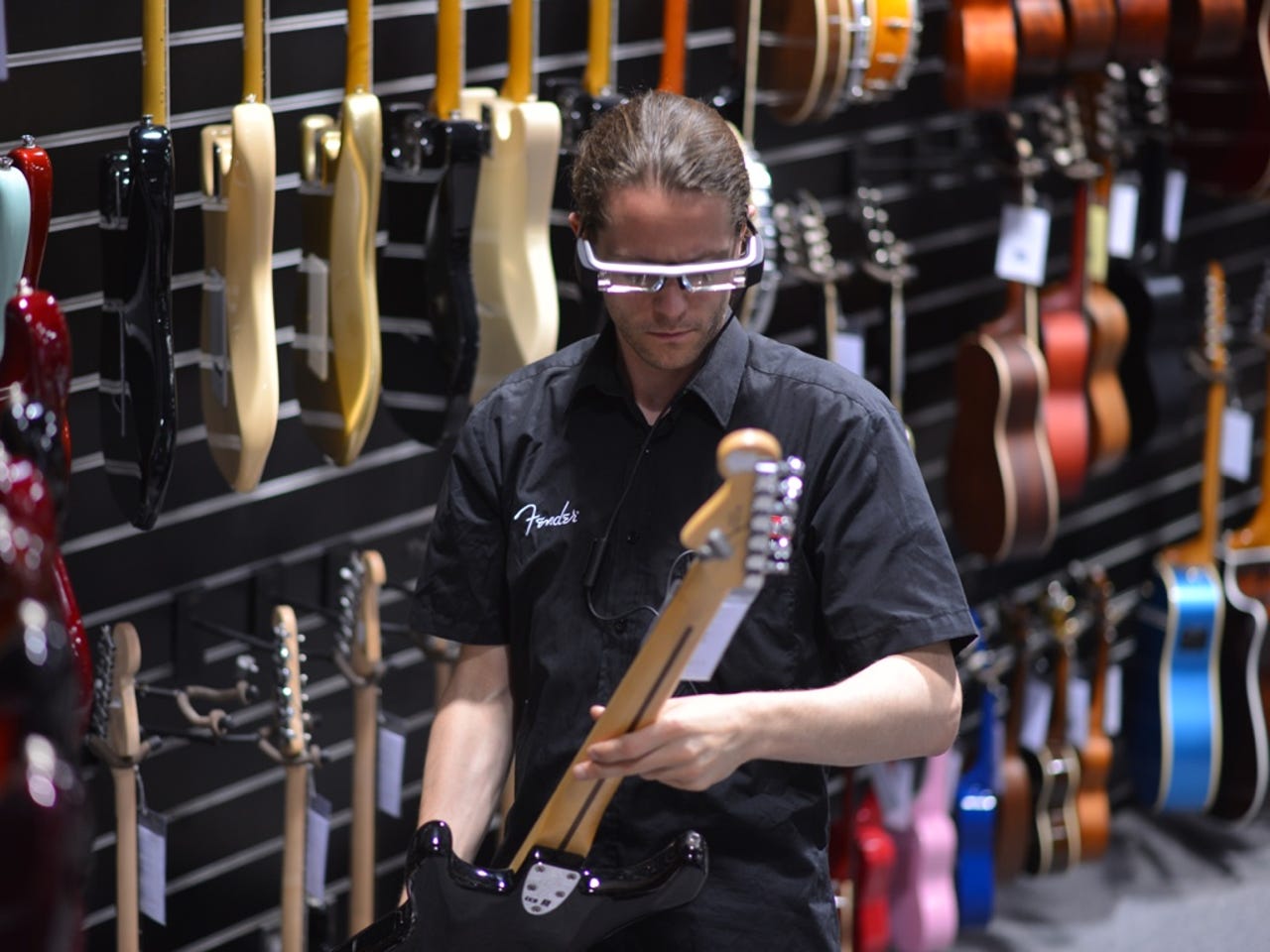GoInStore uses AR to blur the line between the online and in-store experience


Dawsons Music uses GoInStore to show online customers the instruments in their stores.
E-commerce giants like Amazon and Alibaba have made shopping for almost anything online more convenient than going into a physical store. The key word there is 'almost', because there are always exceptions. There are certain products that people refuse to buy without seeing them in person.
London-based GoInStore is trying to bridge this gap between online shopping and the in-store experience, using Epson's Moverio smart glasses to connect in-store retail associates with online shoppers.
The company got its start in September 2015 and is using augmented reality to change the way people shop.
The human element
GoInStore co-founders Aman Khurana and André Hordagoda worked together for a number of years, most recently with a 'personalization provider'. Basically, they worked with a company that used algorithms and AI to analyze browser data and purchase data to personalize the onsite experience for a particular customer and improve conversion rates.
Typically, when you walk into a store, you're greeted by someone who has specific knowledge of the product and can help you find what you need. The goal of personalization was to replace that human element for the online shopper.
However, the conversion rates weren't indicative of this being a good goal. A typical conversion rate for an online store is 2-3 percent, while a brick-and-mortar store enjoys ten times that at 20-30 percent, Khurana said. The pair began to see that maybe replacing the humans wasn't a great idea.
"The most valuable sales asset that was affecting the conversion rate was actually the in-store sales salesperson," Khurana said. "It was actually the human element that would get people to cross the line."
The human ability to quickly understand what the customer was looking for and provide information or assurance that they were making the right purchase was driving sales, and the founders decided to use that knowledge to drive online conversions. Thus, GoInStore was born.
The technology
GoInStore uses Epson's Moverio smart glasses to power their experience. Online customers are able to click a button on the website and are then connected to an in-store retail specialist who is wearing the Moverio glasses.
"They're looking through the eyes of the retail assistant, and they can guide the retail assistant to what they want to see," Khurana said.
For example, if you are shopping for a limited-edition guitar available at a specific store, you can ask the employee to show you any potential imperfections in the finish, or the detail in the fret inlays. So, if you have to buy it online, it makes it less of a risk.
Or, if you are wanting to purchase a high-end automobile (another GoInStore use case), the salesperson can take you through the condition of the leather, the condition of the paint, and the sound of the engine.
GoInStore's solution can be used to show online customers the detail on an exotic car for sale.
GoInStore has an application that they put on the glasses, which is then integrated with the client's website, and the retailer must explain under what conditions they want the call-to-action button to appear on the site. The most basic condition would be that an in-store sales associate is actually available to take your call.
"For example, certain retailers only want the button to show on certain products or categories," Khurana said.
Employees login with their credentials at the beginning of their shift and mark themselves as available or unavailable throughout the day. If an employee is unavailable, the button will not show up on the site.
Once the user clicks the button, the software will assign the call to the most relevant sales associate. If the customer is browsing from New York, they want a retail assistant in New York -- perhaps even the closest store with the item in stock -- to answer the call. Also, they route calls based on expertise. For example, if someone is looking up bed sheets, you don't want to route the call to an associate who works with televisions.
Once the call comes through, the sales associate is given information on what page the caller was looking at when they made the call and the associate can press the 'insight' button to get even more information on the buyer. Because they track the data on individual uses of the technology, GoInStore can help retailers pay in-store employees commission on closing online sales.
Looking forward
Khurana said that the GoInStore technology likely won't work with widely-available, non-differentiated consumer goods, like a cheap sweater. But, there are four specific reasons where tech could come into play:
- A considered purchase, like a complex product where you need more in-hand information
- A high-ticket item, as some people have a threshold for how much they're willing to spend online versus in-store
- An emotional attachment to the purchase, such as a gift for someone or a purchase for a special event
- A product where you want to engage with the actual product you're interested in, like an automobile
However, there are specific challenges to making the technology more accessible. Obviously, smart glasses aren't commonplace just yet, but Khurana said the biggest issue has been wi-fi connectivity. Many retail stores don't have wi-fi with the kind of upload speed needed to ensure quality streaming video. Another big challenge is lack of collaboration within an organization.
"It was surprising to see how disjointed a single business was between both channels," Khurana said.
For example, an e-commerce director and retail director might be on different wavelengths when it comes to resource allocation for a tool like this. E-commerce may like the GoInStore offering as something that increases conversion, but retail may not like it because it requires extra work from their employees. So, one of Aman's big challenges is getting leaders to see their organization as a single channel.
The company is currently working on a long feature list and is about to release a scan-to-basket feature where an employee can scan the barcode and it will add the item to the cart of the person shopping online.
The company is also working on a beacon-based alert tool that will alert an in-store employee if a customer walks in who has shopped online, telling the employee which of the store's web pages the customer has visited, among other relevant data.
All in all, GoInStore is trying to bring the in-store experience to the online shopper, and augmented reality is helping the company achieve that.